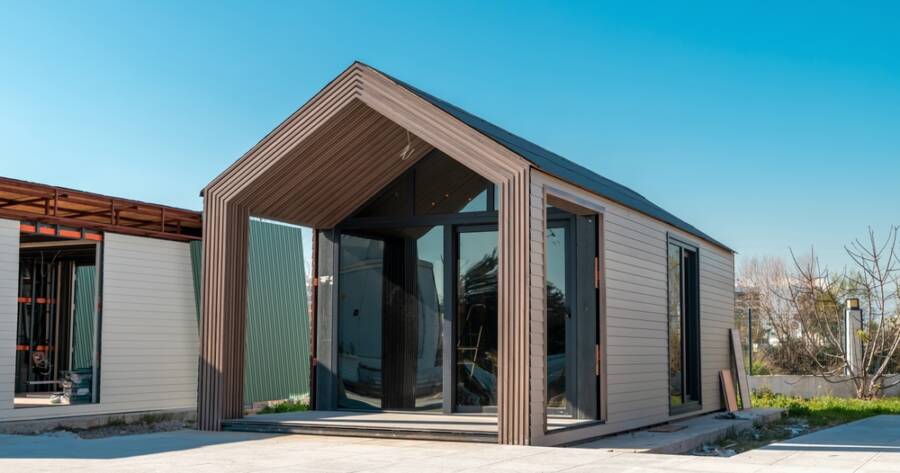The search for affordable housing has become increasingly difficult. High construction costs, extended building timelines, and limited inventory make it tough for buyers to find homes that suit their needs. Prefabricated homes on demand are revolutionizing the housing market by offering an efficient, cost-effective, and sustainable alternative.
Speedy Construction Reduces Costs and Delays
Traditional home construction can take months or even years, often facing setbacks due to labor shortages, weather conditions, and material delays. Prefabricated homes, however, are built in factory-controlled environments, significantly reducing these issues.
Since components are pre-assembled before being transported to the building site, construction moves much faster. Many of these homes can be installed in a matter of weeks rather than months. This accelerated timeline lowers labor expenses and makes homeownership more affordable. Developers also benefit from cost savings, enabling them to offer reasonably priced housing options to buyers.
Sustainable Building for a Greener Future
The construction industry generates a significant amount of waste, with traditional building methods often leading to excessive material disposal. Prefabricated homes, on the other hand, prioritize sustainability by using precise measurements and efficient material allocation in factory settings.
Many prefabricated homes incorporate eco-friendly materials such as sustainably sourced wood or recycled steel. Additionally, factory production allows for better recycling of excess materials, minimizing overall waste. Choosing prefabricated housing supports environmental conservation efforts while still meeting the growing demand for homes.
Customization Without the High Costs
A common misconception is that prefabricated homes lack individuality or design flexibility. In reality, modern prefabricated homes offer extensive customization options, allowing buyers to tailor layouts, finishes, and features to match their preferences.
Beyond aesthetics, homeowners can also incorporate energy-efficient upgrades, smart home technology, and eco-conscious features. Despite these choices, prefabricated homes often remain more budget-friendly than traditional housing due to efficient manufacturing processes. This balance between affordability and personalization makes them an attractive option for diverse buyers.
Addressing the Housing Shortage
With populations increasing—particularly in urban centers—traditional construction methods struggle to keep pace with housing demands. This shortage drives up prices and limits availability, making affordable housing a pressing concern. Prefabricated homes offer a scalable and efficient way to meet this demand.
These homes can be quickly manufactured and transported to various locations, making them suitable for both city developments and rural housing needs. Governments and real estate developers are increasingly turning to prefabricated solutions to provide quality housing in areas experiencing rapid population growth or economic challenges.
Additionally, prefabricated homes serve as a valuable resource for disaster relief. When natural disasters displace communities, these quickly constructed homes provide an immediate and durable housing solution, helping people rebuild their lives faster.
The Impact of Technology on Prefabricated Housing
Technological advancements have significantly improved the efficiency and quality of prefabricated housing. Automated manufacturing processes, precision engineering, and 3D modeling ensure that each home is built to high standards with minimal errors.
Virtual reality and digital modeling allow potential homeowners to visualize and customize their homes before construction begins. Additionally, smart home technology—such as automated energy management and security systems—can be seamlessly integrated into these houses during production, enhancing convenience and efficiency.
As technology continues to advance, prefabricated homes will only become more sophisticated, offering even better solutions for cost-effective and sustainable living.
The Future of Affordable Housing
Prefabricated homes on demand are reshaping the housing industry by making quality housing more accessible, cost-efficient, and eco-friendly. Their rapid assembly, reduced environmental impact, and flexible customization options make them a compelling choice for modern homeowners and developers alike.
As awareness of their benefits grows, the demand for prefabricated homes is expected to rise. Whether addressing urban housing shortages, rural living challenges, or emergency shelter needs, these homes present a forward-thinking solution to one of the most pressing issues of our time. By embracing this innovative approach, we can build a future where affordable and sustainable housing is available to all.




